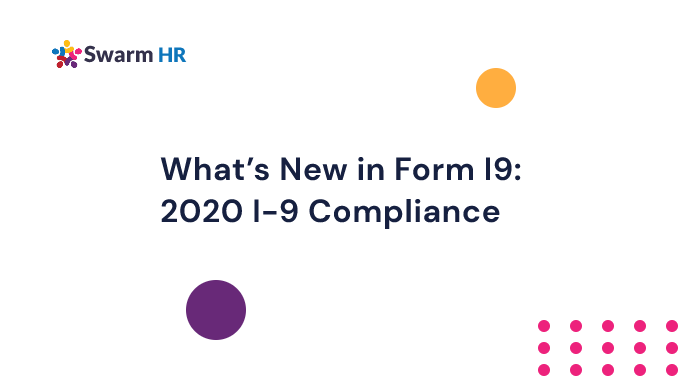Managing Employees Working from Home

Under uncertain times, many issues can arise for employers managing new and current employees working from home. Common problems have been time management, collaboration, communication, and ensuring staff are healthy. At SWARMHR, we have convenient tips on how employers can help their employees adapt.
ONBOARDING REMOTE EMPLOYEES & SIGNING DOCUMENTS:
Onboarding a new employee in person is usually quite straightforward, but working from home can pose some challenges. However, effective communication and technology can ease the onboarding process:
- Increase Comfortability
It is important for new employees to feel welcomed to the company. Sending new hires basic electronics, like laptops and keyboards ensures that they have solid communication tools. Employee handbooks and company merchandise are also helpful to send.
- Establish Connection
Normally, new employees would be meeting their coworkers and shaking hands with the CEO. Instead, fellow coworkers in related departments can introduce themselves to new hires via digital meetings. Tutorials on password security and cloud backup software can be arranged with the IT department as well; manuals on setting up company emails and video conference software can be sent out.
- Training
Onboarding a new employee requires lots of training; however, online tools can provide helpful materials. Employers can record demos and highlight certain key points that they would like trainees to focus on. They can also develop a training schedule and assign interactive training courses. Following up training sessions with calls can encourage trainees to feel more confident.
While paperwork is easier to manage digitally, it can be challenging to receive and validate electronic signatures. With e-signature tools, employers can send out all types of documents. These documents can be safely and quickly signed; encrypted and compliant documents support a protected environment.
MANAGING WORK & TIME SHEETS:
As a result of working from home, usually straightforward tasks can become significantly more difficult. However, employers can still easily perform these — even from a remote location.
Deadlines are a large part for making sure work is completed on time. They’re even more important when teams are working from home and are unable to access each other as easily. It is useful to set new intermediary deadlines: they show which tasks still need to be finished and when they need to be finished by.
- Summative Reports
It is easy to forget which tasks have been completed and are in progress due to balancing many commitments. As employees write summative reports, the tasks that have been done on a day-to-day basis are recorded, along with work that is still pending. Both employers and employees can benefit by understanding what can be improved.
When employees are working from home, it is difficult to know how they are spending their time and which issues they may be having. SWARMHR is currently in the process of adding employee monitoring to its software. This feature can assist employers with managing how employees are working.
- Timesheets & Invoicing
The flexibility of working from home can prevent employers from managing when employees are working. SWARMHR allows employees to upload timesheets as a provided service that includes a status report function within them. These timesheets are collected and can automate your invoicing. SWARMHR keeps track of which invoices are still open, alerts you, and records your entire payment history.
TASK MANAGING OF EMPLOYEES:
Time management is a handy skill, especially when managing a workforce during the COVID-19 pandemic. However, employers can take several steps to keep their employees on track of their responsibilities.
- Communication
Sticking to a specific communication method limits confusion: all announcements, meeting information, and any updates on the company’s calendar can be consistently received by everyone. Strong and direct communication, such as video calls between employees and managers is great way of boosting productivity.
- No-agenda meetings
No-agenda meetings prioritize the comfort of employees, making them feel heard. Managers who empathize with employees’ feelings during this time can reduce overall work stress.
- Balancing work and daily life
A flexible work schedule allows employees to balance work and daily life. Respecting time and privacy will likely inspire and motivate employees. Everyone is tackling this time with more than just work from home concerns.
During COVID-19, managing a remote workforce can be quite difficult. It is a great time to invest in SWARMHR’s software application that manages physical tasks with ease.
Catapult to digital-first organization
Learn More
YOU MAY ALSO LIKE

09 June, 2022 6 min read
How do Employers Stay Compliant: Covid-19 Crisis
During uncertain times, employers need to have all their boxes checked so they are not penalized even further. This is how employers can stay compliant during the Covid-19 crisis . . .

09 June, 2022 6 min read
Top Technology Trends To Learn In The Year 2020
The year 2020 is promising year for Technology and innovations around the world. In this article we discuss the Top Technology trends to learn in the year 2020 Artificial Intelligence . . .

09 June, 2022 6 min read
What’s New in Form I9: 2020 I-9 Compliance
In case you forgot, Form I-9 is used to verify the identity and employment authorization of individuals hired for employment in the United States. All U.S. employers are . . .



